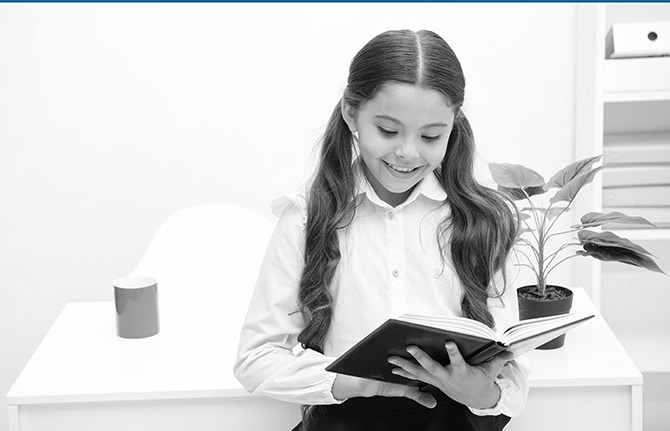
Balancing Equations That Really Matter
January 10, 2024
Using a House System to Support PBIS and SEL
January 10, 2024Mrs. Miriam Gettinger
When imagining a Social-Emotional Learning program designed for the Jewish day school, one typically thinks of a middos or character development program based on lessons and statements from texts such as Mesilas Yesharim, Orchos Tzadikim, Parshas Kedoshim, Pirkei Avos, or the like. Perhaps though, the first and most paradigmatic Jewish SEL curriculum we ought to consider is one based on the daily tefilla, which we consider as “avodah shebalev”, service of the heart. While the term avodah connotes spiritual worship through the medium of karbanos and specified textual prayers as their substitute post-Temple, it simply implies humble servitude and epic labor. Tefilla is a process for authentically engaging, grappling with, and overcoming challenges, both intra- and interpersonally, as we seek self-regulation as we attempt to maintain control of our lives in a world that is increasingly divisive, materialistic, and technologically addictive.
The Responsive Classroom, my professional choice for SEL, uses an inherently positive approach to facilitate a safe, predictable, joyful, and inclusive environment where all students have a sense of belonging and significance. Elementary classes enjoy a morning meeting where each student is greeted individually and participates in an activity and/or sharing experience. This reinforced the culture of community wherein each member uniquely contributes and is of significance to the greater whole of the class.
Tefilla bitzibur, whether with a student-led school minyan or a classroom of students davening aloud and singing together, creates such a Responsive Classroom ambiance, especially if the teacher or the students share a be’ur tefilla message or inspiring story after being welcomed by name into the makom tefilla. A brief activity can be added, such as an interactive word or match game or scarf/balloon toss to reinforce academic content related to a highlighted tefilla or theme.
By way of example, students can be presented with cards as they enter the classroom which prompts them to find their match. This could be either translation, shoresh cognate, or categorization (such as baruch she’amar matches with pesukei d’zimra) amongst their peers, and then come to the Morning Meeting circle together to sit with their partner and hold up their matches. The teacher might then greet the group by choosing names (intentionally or randomly) and saying, “Boker tov, Zehava & Eliana… Something I am feeling grateful for today is _.” The student pair would respond in kind, greeting the teacher and announcing their answer to the prompt. They would then greet another student pair in the circle. This shared greeting with the gratitude and tefilla conversation would continue for a few minutes before the class collectively begins to sing modeh ani.
One pillar of The Responsive Classroom is the seamless integration of academic content with SEL, predicated upon interactive modeling. Tefilla time becomes an inherent community-building exercise that both recognizes individuality and models social and communication conventions. Children in a post-COVID digital age must be explicitly taught to make eye contact and smile as well as how to greet and speak with their peers who may be introverted or neurodiverse. Tefilla, often the start of the students’ day, is an apt opportunity to frame these lessons and create the ‘kahal’ atmosphere in the class before plunging into the recitation of prayers.
In the Second Steps SEL curriculum, the instructional and activity component of these lessons is typically taught by the school counselor. Schools using this approach should consider inviting the Rebbe or Morah to participate occasionally to frame the lessons through tanach and tefilla examples. Teaching an empathy and perspective-taking lesson on embracing a new student into a tight-knit class (welcoming a stranger to a new environment) can be connected with Avraham Avinu’s empathetic hospitality towards hot tired Bedouins in the Negev desert with his four-door tent and offer to wash their feet. Also related is the mitzvah of ‘v’ahavtem es ha’ger’ and the idea that we were once strangers in Egypt which is recited in the tefilla of shema twice daily.
Every successful SEL program must be consistently and universally practiced and supported across the students’ day. The key to teaching and inspiring the whole rather than the compartmentalized fragmented student demographic is integration. A great example of this which became a viral video is the “tefillin challenge” from the Yeshiva Torah Vodaath’s 2022 graduation, where the 8th-grade students served as a positive influence on their secular American History teacher, inspiring him to begin to wear tzitzis and tefillin daily.
SEL poses a challenge at the middle or high school level, with departmentalized classes and shared group times at a premium. Tefilla offers an opportunity for introspection with an emphasis on the reflexive ‘pallel’ construct. Students can discuss and deliberate about relationships with Hakadosh Baruch Hu, their peers, and the adults in their lives, as well as meaningfully focus upon their personal spiritual and character growth. It can be powerful to reflect with thinking, growth-minded teenagers about the relevance of ideas such as ma Hu af ata and ma’aveer al middosav, as well as to discuss the issues of competition, family pride, and genuine tzniyus from ma tovu ohalecha Yaakov (Rashi on the private tent structure). Topics such as bullying and cyberbullying are inherent in the added bracha of vilamalshinim in the amida.
We tend to focus exclusively on the bein adam laMakom aspect of tefilla, when in fact there is such richness in the bein adam l’chaveiro arena in the tefillos and pirkei Tehillim recited daily. Connecting tefilla to divrei Torah, inspiring stories, and compelling videos, as well as housing a set of Shmiras Halashon or Taryag Mitzva Project’s Mitzva Bein Adam L’chaverio sefarim in the davening area can serve to broaden the students’ socioemotional mindset for and perspectives on tefilla.
Collaboratively, students might design their own mini m’komos hatefilla. In my kiruv-oriented school, where many students struggle with the compulsory nature of tefilla, we used art and technology to create a unique Design Thinking project, making maximum use of existing classes and inviting student voice and choice into their learning, expressing authentic and engaging SEL in Yiddishkeit through their individual and collaborative styles. See a 360-degree view of the Tefilla Room here.
Students express deep-seated emotions as they ‘free write’ in journal entries, privately documenting questions, insights, and – significantly – SMART goals, at least every erev Rosh Chodesh, having the internal dialogue with themselves after a class conversation on the myriad of relevant SEL topics they are grappling with.
Avoda in the Bais Hamikdash had a musical component, so our avoda shebalev should, too. Perhaps music can be incorporated into tefillos representing the luach hashana, with students studying tefillos unique to each chodesh or chag and developing their own personal and or class ‘playlist.’ By way of example, for chodesh Elul, L’dovid Hashem Ori could be studied, and students then select melodies from contemporary artists for some of its famous pesukim and/or create their own music and lyrics to depict the themes of hope, resilience, and yearning – Kavei El HaShem or Achas Shaalti – to share with their peers and school community.
In the divisive post-COVID and insidious social media milieu in which they are growing up, today’s students are increasingly plagued with heightened anxieties. Yeshivos across the spectrum employ full-time counselors and mashpiim and the number of students presenting with socioemotional needs or neurodiversity in our classrooms is estimated to be between 40-50%. CoJDS’s summer Think Tank addressed this ubiquitous new normal in its professional development head-on: Social-Emotional Learning presentations by Rabbi Dr. Fox of Chai Lifeline attracted over 100 Zoom attendees even at a very late hour for most to accommodate his Los Angeles time differential.
“לא ברוח ה’ ואחר הרוח רעש לא ברעש ה’. ואחר הרעש אש, לא באש ה’ ואחר האש קול דממה דקה” (מלכים א יט, יא-יב)”
All students benefit from SEL instruction and in this generation of increasing anxiety and depression, we cannot underestimate the value of simple quietude and moments of silent reflection during the student’s day. Their world is chaotic, frenzied, and often overwhelmingly distracting. Tefilla provides an integral reset button, framing their day during a formative shacharis time slot and pausing it during the midday mincha opportunity. If silence is golden, reflective quietude is platinum! The amida, conceived by Chana as midaberas al leeba, is a twice-daily in-school opportunity for SEL integration if only we maximize its potency.
Ever the pragmatist, I conclude with the critical and creative how and when to integrate upper-grade SEL into our tefilla programming beyond the traditional school schedule. Staffing is the bane of every school’s existence and even when we are fully staffed with quality teachers, we face daily absences and a clear need to fill time gaps – some call this “ragged time” – meaningfully. Every teacher struggles with the issue of “productive struggle” or “appropriate challenge” in the differentiated classroom, with deeper rather than just additional learning for the gifted. Teachers want to provide passion project opportunities for students as they navigate advocacy and agency in their personalized learning, both in academic and spiritual growth. Allow me to make a plug here for the new, incredibly rich CoJDS curricula in both tefilla and navi for the middle school age (which can also be used as an opportunity for self-study or bekius in a high school setting.) Rabbi Feit’s Davening with Depth Curriculum encompassing Birkas Hamazon, Shemone Esrei and Shema U’birchoseha, as well as Mrs. Feinstein’s Oze Limalko Shmuel curriculum, masterfully address these ubiquitous problems. These unique curricula may well be supported by Title funds when integrated with SEL. As we face the instructional challenges of teaching our current students, not the students we wish we had, nor those we had five years ago, it is worthwhile to explore these resources and consider how seamlessly they integrate with the SEL imperative in our schools.
Mrs. Miriam Gettinger has been a principal for the past 30 years, currently at the Hasten Hebrew Academy of Indianapolis and previously at the South Bend Hebrew Day School, as well as at the helm of Bais Yaakov High School of Indiana. A graduate of Beth Jacob Teachers Institute of Jerusalem as well as Touro College, she has taught Limudei Kodesh to all ages from elementary to adult for over 40 years. Contact Mrs. Gettinger at [email protected].

